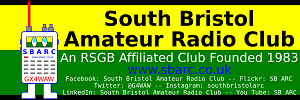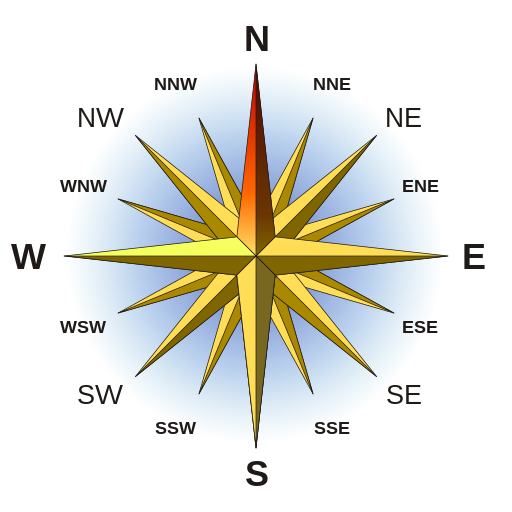You are encouraged to share this post with your friends, acquaintances, colleagues and family by all channels available to you.
News posts, such as this, published on the SBARC website are reposted via a number of other channels including social media feeds and our Groups.io mailing lists. These external services may alter the formatting or layout of the original News Post. If you want to see this News Post in its original form please visit the SBARC website News page and follow the link or links to the story or stories of your choice.
UPDATE 04/10/2023: There have been technical difficulties with this planned activity period and the operation may be postponed to the 16 – 20 October 2023.
Due to equipment issues the last ISS SSTV activity period was back at Christmas 2021. ARISS have been working at getting replacement equipment proven and tested and sent back to the ISS. This has now occurred and to complete in-situ testing the equipment is to be activated for a short period next week (w/c 02/10/2023).
The activity periods are proposed to be:
- Transmissions start: ~14:40 UTC on Tuesday 03 October 2023.
- Transmissions end: ~18:15 UTC on Thursday 05 October 2023.
Transmissions are expected to take place on 145.800MHz FM +/- Doppler shift and use the SSTV mode PD-120.
As with all activities on the ISS, this may be subject to change to accommodate other operational needs, you are advised to read this page for the latest information.
Provisional pass predictions based on the clubhouse, which should be close enough for most within Bristol, are presented below:
Table of ISS Passes
Address: Novers Park Community Association, Rear of 124 Novers Park Road, Bristol, BS4 1RN
- Latitude (degrees N-S where North is +ve): 51.425400°
- Longitude (degrees E-W where East is +ve): -2.593882°
- IARU (Maidenhead) Locator: IO81qk
- Elevation (metres above Ordnance Datum AOD): 64m
- What.Three.Words: ///Weeks.Exams.Flight
If you are reading this News post through Groups.io then, due to formatting limitations imposed by Groups.io, the colour banding may not show up in your post. For a full colour correctly formatted version please head over to the SBARC Website News Page and follow the “Read More” link under the headline and description.
Notes:
In the table below:
- Table Entries with a cyan background indicate passes where: 0° < Maximum Elevation ≤ 30°
- Table Entries with a yellow background indicate passes where: 30° < Maximum Elevation ≤ 45°
- Table Entries with a green background indicate passes where: 45° < Maximum Elevation ≤ 90°
- Times are UK clock time, that is GMT/UTC during the winter and BST/UTC+1:00 during the summer
- Elevation shows the degrees above the horizon. Zero degrees is the horizon and ninety degrees is directly overhead
- Azimuth represents the direction to the ISS using a traditional 16 cardinal point compass rose
| Pass No. |
Date | Acquisition of Signal “AoS” | Maximum Elevation | Loss of Signal “LoS” | Pass Duration (Min:Sec) |
Comments | ||||||
|---|---|---|---|---|---|---|---|---|---|---|---|---|
| UK Clock Time | Elevation | Azimuth or Bearing |
UK Clock Time | Elevation | Azimuth or Bearing |
UK Clock Time | Elevation | Azimuth or Bearing |
||||
| 1 | 03/10/23 | 15:00:13 | 10° | WSW | 15:03:32 | 66° | SSE | 15:06:51 | 10° | E | 06:38 | Daylight |
| 2 | 03/10/23 | 16:36:55 | 10° | W | 16:40:16 | 85° | N | 16:43:37 | 10° | E | 06:42 | Daylight |
| 3 | 03/10/23 | 18:13:41 | 10° | W | 18:16:57 | 50° | SSW | 18:20:11 | 10° | SE | 06:30 | Daylight |
| 4 | 03/10/23 | 19:51:22 | 10° | WSW | 19:53:06 | 14° | SW | 19:54:51 | 10° | S | 03:29 | Visible |
| 5 | 04/10/23 | 12:37:06 | 10° | S | 12:38:52 | 14° | SE | 12:40:39 | 10° | ESE | 03:33 | Daylight |
| 6 | 04/10/23 | 14:11:48 | 10° | SW | 14:15:03 | 51° | SSE | 14:18:18 | 10° | E | 06:30 | Daylight |
| 7 | 04/10/23 | 15:48:22 | 10° | W | 15:51:43 | 85° | N | 15:55:04 | 10° | E | 06:42 | Daylight |
| 8 | 04/10/23 | 17:25:08 | 10° | W | 17:28:27 | 66° | SSW | 17:31:46 | 10° | ESE | 06:38 | Daylight |
| 9 | 04/10/23 | 19:02:16 | 10° | W | 19:04:46 | 20° | SW | 19:07:16 | 10° | SSE | 05:00 | Daylight |
| 10 | 05/10/23 | 13:23:26 | 10° | SW | 13:26:32 | 37° | SSE | 13:29:40 | 10° | E | 06:14 | Daylight |
| 11 | 05/10/23 | 14:59:46 | 10° | W | 15:03:07 | 90° | S | 15:06:27 | 10° | E | 06:41 | Daylight |
| 12 | 05/10/23 | 16:36:32 | 10° | W | 16:39:52 | 80° | SSW | 16:43:13 | 10° | ESE | 06:41 | Daylight |
| 13 | 05/10/23 | 18:13:26 | 10° | W | 18:16:20 | 28° | SSW | 18:19:14 | 10° | SSE | 05:48 | Daylight |
| 14 | 06/10/23 | 12:35:09 | 10° | SSW | 12:38:01 | 27° | SSE | 12:40:54 | 10° | E | 05:45 | Daylight |
There is an official European Space Agency (ESA) video about receiving SSTV from the ISS using the web SDR at Goonhilly for those who don’t have a capability to receive on 145.800MHz. You can see the video here: ESA ISS SSTV Video. For those interested in doing their own reception and decoding either live or after the event using recordings made during the passes for subsequent decoding the AMSAT website has a good primer that will serve as a good reference for those more experienced too.
We encourage you to have a try at receiving and decoding these images, you do not need specialist equipment, Kevin 2E0AWX was successful with just a handheld, set-top whip and Robot36 on a ‘phone within 2 weeks of passing his Foundation exam, and Greg 2W1BUF collected a number of good decoded images using a SDR dongle or a Yaesu FT2900 with MMSSTV. So don’t be put off; give it a try, any images you receive can be included on the Club website if you send them to us; contact details at the bottom of the webpage.
SSTV Programs are available for all platforms so no matter what you use there’s probably something to decode the image:
- Linux including Raspbian on the Raspberry Pi – QSSTV can be found at users.telenet.be/on4qz/qsstv/index.html if you want the absolute latest version. However Debian based distros such as Ubuntu, Mint and others almost certainly will have QSSTV in their repositories as will other mainstream distros and the repository version is usually more than adequate.
- Windows – MMSSTV can be found at hamsoft.ca/pages/mmsstv.php.
- Mac OSX – MultiScan can be found at www.qsl.net/kd6cji.
- Android – Robot36 can be installed from the PlayStore and includes both PD180 and PD120. Not sure what minimum version of Android it wants but it runs without issue on Android 6 which is reasonably long in the tooth.
- iOS – Black Cat Systems sstv-slow-scan-tv.
For those who like real time information the Android App AmSatDroid Free is one of a number of live satellite trackers available for Android. Similar apps are available for iOS, a simple example is ISS Spotter.
How to Obtain Your own Pass Predictions
If you want to run your own location specific pass predictions try using:
- The AMSAT On line satellite pass predictions
- The Heavens Above website
The AMSAT site will require either:
- Method 1
- Your 6 character IARU (Maidenhead) locator square (e.g. IO81qk); and
- Your elevation in metres (e.g. 64).
- Method 2
- The absolute (without +ve or -ve sign) value of your Latitude in decimal degrees and selecting North where the original value is positive (greater than 0) or selecting South where the original value is negative (less than 0) (e.g. 51.4254 North);
- The absolute (without +ve or -ve sign) value of your Longitude in decimal degrees and selecting East where the original value is positive (greater than 0) or selecting West where the original value is negative (less than 0) (e.g. 2.593882 West);
- Your elevation in metres (e.g. 64).
The Heavens Above site is more flexible and will accept any of:
- Method 1
- Your address including postcode (e.g. Novers Park Community Association, Rear of 124 Novers Park Road, Bristol, BS4 1RN); and
- Your elevation in metres (e.g. 64).
- Method 2
- Your What.Three.Words location descriptor (e.g. ///weeks.exams.flight); and
- Your elevation in metres (e.g. 64).
- Method 3
- Your Latitude in decimal degrees where +ve is north of the equator and -ve is south of the equator (e.g. 51.4254);
- Your Longitude in decimal degrees where +ve is east of the Greenwich Meridian and -ve is west of the Greenwich Meridian (e.g. -2.593882); and
- Your elevation in metres (e.g. 64).
When using Heavens Above don’t forget to check that you have the correct timezone (e.g. (GMT +0:00) United Kingdom/Ireland).
Heavens Above understands British Summer Time and corrects accordingly.


